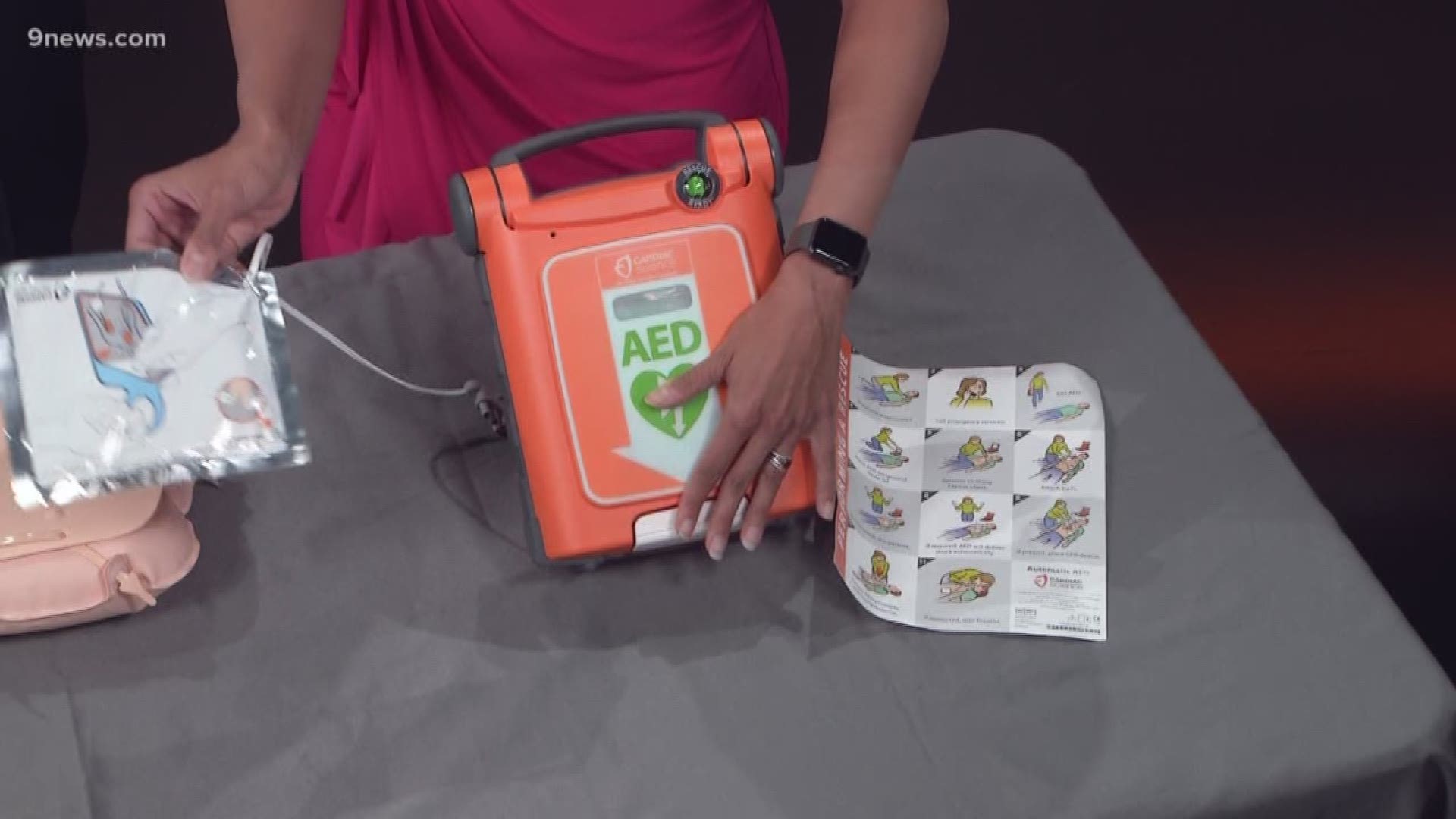DENVER — Every year in the U.S., more than 350,000 cardiac arrests will occur outside of the hospital, according to the American Heart Association(AHA).
Last year, Louis Cicio, was one of those patients. On January 30, 2018, he went to the gym during his lunch hour. After finishing up a cross-fit style workout, he went back to the office where he sat down at his desk before heading to the showers.
A cardiac arrest is when the heart stops beating and blood is not flowing to the vital organs (like the brain, lungs, kidneys etc). Statistics from the AHA show that only one in 10 people will survive a cardiac arrest. However, if a person receives immediate bystander CPR after cardiac arrest, it can possibly double or even triple the chance of survival, according to the AHA.
As part of National CPR and Automated External Defibrillator (AED) Awareness Week, which runs from June-7, Cicio is sharing his survival story.
A co-worker heard him gasp for air and quickly rushed over. Cicio was not responding, so that coworker called 911. A former cardiac nurse happened to be in the office on that day and recognized that Cicio was in cardiac arrest. She started CPR immediately.
Within four minutes, North Metro Fire Rescue arrived at the scene. Cicio had four shocks from the defibrillator and was rushed to Good Samaritan Hospital. Within minutes, he was in the catheterization lab getting three stents placed in his heart’s coronary arteries (which supply blood to the heart muscle).
Although he has no of the memories two weeks before or after the event, Cicio is alive and sharing his story with the hope of helping others.
He hopes others can be as lucky as he is, back to work and with his family and friends.
Recognizing the signs of a cardiac arrest, calling 911, doing CPR immediately and getting shocked by the defibrillator is all part of the chain of survival.
About 80 percent of cardiac arrests occur at home, and just a few minutes of education could help you save someone's life in an emergency.
Steps to Hands-Only CPR
If you see a teen or adult suddenly collapse:
- Call 911 and send someone to get an AED
- Push hard and fast in the center of the chest (at 100-120 compressions per minute)
Hands-Only CPR can be performed by untrained bystanders while they are waiting for help to arrive. It should only be performed on teens or adults. Push hard and fast, at least 2 inches deep with the chest compressions in the center of the chest (at the sternum/breastbone) at a rate of 100-120 compression per minute.
Children and infants still need to have breaths performed. More information at www.heart.org/handsonlycpr
How is Traditional CPR different than Hands-Only CPR?
Traditional CPR can be learned through courses which are provided by a number of organizations. CPR for adults, children, and infants uses the C-A-B acronym.
C- Compressions- push hard and fast at 100-120 compressions per minute at least 2 inches deep in the center of the chest. Do 30 chest compressions.
A- Airway- tilt the head back, lift up the chin
B- Breathing- if not breathing give 2 breaths
Go back to doing cycles 30 chest compressions followed by two breaths until help arrives.
Before beginning CPR you should do the following:
- Check the scene (to make sure you and the victim are safe)
- Tap the shoulder and ask if the person is OK?
- Shout for help
- Call 911 and send someone to get an AED
- Check for normal breathing. If not breathing normally, then start CPR
Child and Infant CPR
- Check the scene
- Tap and shout
- Shout for help. Phone or have someone phone 911 and get an AED
- Check for breathing. If not breathing, start CPR
For children, use either one or both hands to give compressions. Push hard and fast about two inches deep for children.
For infants, use two fingers of one hand to give compressions. Place them on the breastbone, just below the nipple line and push hard and fast about 1.5 inches deep for infants. Use the same rate for children and infants as for adults (100-120 compressions per minute).
Learn how to perform CPR and use an AED at www.cpr.heart.org
SUGGESTED VIDEOS | Local stories from 9NEWS

